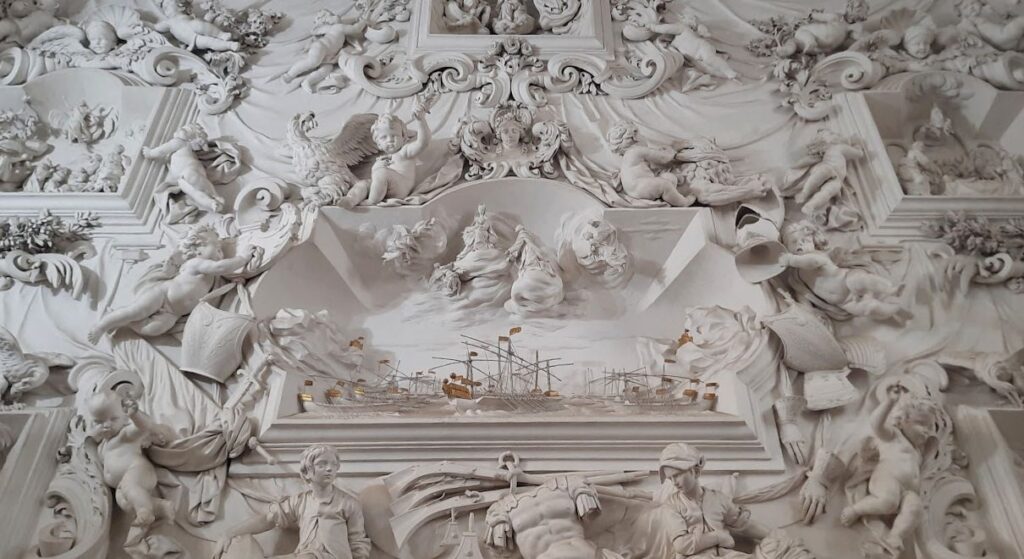What to see in Palermo in one day
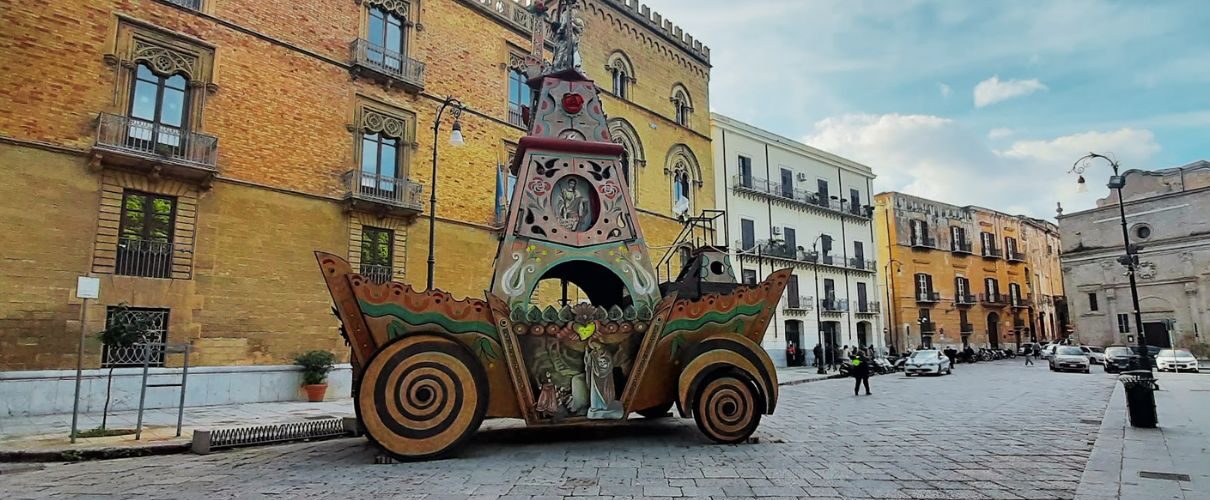
Palermo, the capital city of Sicily, has a very long and rich history, an intriguing blend of epochs, cultures, and well-rooted traditions, which make it one of the unmissable destinations in Sicily.
The city exudes a profound sense of dichotomy, which is part of the charm of Palermo and makes it a peculiar destination to visit. You will find the majestic allure and peacefulness of the Palatine Chapel and the vibrant chaos of the Ballarò street market side by side.
Palermo also makes a great starting point for touring Sicily by land or sea.
If you only have one day dedicated to visiting the city, with some planning ahead, you can enjoy a significant experience of its must-see rich blend of history, culture, and mouthwatering cuisine. So, get ready to immerse yourself in the irresistible allure of the city!
TABLE OF CONTENTS
How to visit Palermo in 24 hours
To make the most of your time, experience Palermo in absolute comfort, a key consideration, particularly during the hot summer months. Opt for an early morning or evening guided stroll through the city’s historic heart when temperatures are milder. For an effortless exploration of the town during the heat of the day, carry on your adventure in a comfortable chauffeur-driven vehicle.
Attempting to navigate Palermo in a rented car you drive may prove to be a complex task, given the city’s bustling traffic, limited parking, and strict city center traffic restrictions.
Start with a guided walk in the old city, from Quattro Canti to Bellini Square, then continue visiting the Arab-Norman style monuments listed among the UNESCO sites for their peculiar historical and architectural heritage.
We have carefully curated for you a selection of Palermo’s most iconic sights, with an added touch of local culture and tradition. We aim to provide you with a comprehensive understanding of the city, particularly if you’re exploring Palermo for the first time!
Walking tour in the old city
Start your day with a guided walk in the heart of the old city of Palermo.
Whether you’ve arrived in Palermo by air, disembarked from a private yacht or cruise ship, or awoken from a night’s stay at the opulent Villa Igiea, the best luxury hotel in the city, start your exploration from the heart of the historical center.
Ask your chauffeur to escort you directly to the bustling center and begin your tour on Via Maqueda, walking to Quattro Canti.
Quattro Canti
The intersection’s grandeur unfolds before you as you approach the Quattro Canti.
What is special here: Four magnificent Baroque facades adorned with statues and four fountains, each representing a season, marks the junction of Palermo’s old quarters.
Pretoria Fountain
Now, venture further into Pretoria Square, a few steps away from Quattro Canti. The square is characterized by the Praetorian Palace, a Renaissance building that hosts the municipality of Palermo, and by the Praetorian Fountain or Fontana Pretoria.
Statues of the twelve major Greek deities, mythological figures, animals, and rivers decorate the fountain, also known by another name: the Fountain of Shame. Why? Someone says that the name derives from the nudity of its statues. Someone says the shame was in the extraordinarily high price paid for the fountain!
What is special here: It may sound incredible, but the beautiful fountain, located right at the center of the square, was built in Florence in 1544. It was subsequently sold by its owner, Luigi de Toledo, who was deep in debt and needed money. So, the fountain was dissembled into more than 600 pieces and relocated to Palermo.
Bellini Square
Walking a bit further, moving at the back of the Praetorian Palace, you reach Bellini Square. Get prepared for a surprising architecture!
You are about to experience first-hand the incredible blend of cultures of the city.
The square, in fact, shows the unique Arab-Norman architecture that developed in Palermo and its area as a testament to an extraordinary period in medieval times when diverse cultures coexisted harmoniously: Muslim, Byzantine, Latin, Jewish, Lombard, and French. The outstanding value of this well-preserved, peculiar architecture and the decorations and mosaics of the time is under the protection of UNESCO today.
What is special here: You will see two catholic churches bearing Muslim traits and Western characteristics simultaneously: the Church of San Cataldo and the Church of Martorana. The visit to the two churches will not take long and is worth entering.
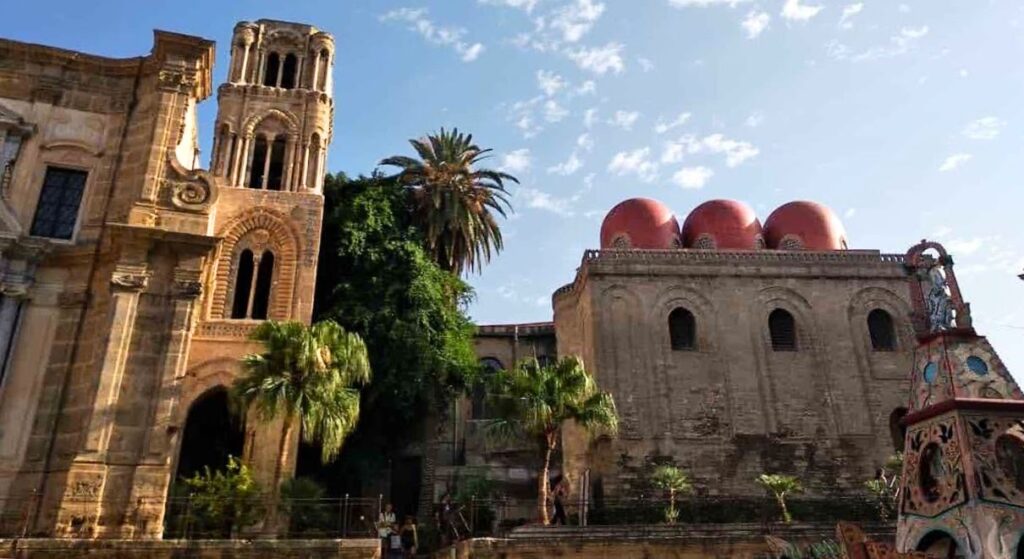
Church of San Cataldo (UNESCO Site)
The small Church of San Cataldo dates to 900 years ago.
As you approach the building, you will first notice the striking cubical shape and the pink-red domes that indeed beckon you to explore further. The simplicity of its exterior belies the incredible beauty that lies within it.
As you step inside, you are greeted by tranquility and simplicity enhanced by the white stone used for its interior.
What is special here: The simplicity of the walls that remarks and highlights the beauty of the floor decorated with polychrome inlays in marble and porphyry.
The Church of St. Mary of the Admiral (UNESCO Site)
This medieval church, also called Martorana, is an excellent example of Arab-Norman architecture decorated with splendid golden mosaics. One of the most remarkable features is, in fact, the stunning Byzantine mosaic portrait of Christ Pantocrator in the apse.
Today, the church belongs to the Italo-Albanian catholic community in Sicily.
What is special here: Apart from the church’, there is another unique detail. The liturgy is still officiated according to the Byzantine Rite in Albanian and Koine Greek, known as the language of the Bible because it was the language of the Greek translation of the Old Testament.
Secret pastries
Linger a bit longer in this historic quarter named Kalsa and enter the Saint Catherine of Alexandria Monastery, right in front of the Churches of San Cataldo and Martorana. If you do not feel like visiting another church, and its monastery, head inside directly to I Segreti del Chiostro, literally meaning the Secrets of the Cloister. This is a unique pastry shop inside the monastery.
In ancient times, all aristocratic families in Palermo turned to nuns for their dessert. They used to go to the parlor of cloistered female monasteries and buy the delicacies made by the holy hands of the nuns handed over through a metal wheel as cloistered nuns had to avoid direct contact with people from outside. Each monastery had its specialty, and recipes were secret and orally transmitted.
What is special here: The desserts are made following the ancient recipes handed down by the nuns of the 21 cloistered monasteries of the city. At the cloister’s pastry shop, you can buy all sorts of traditional sweets such as the Martorana fruit, exquisite sweets made from marzipan, molded and tinted to resemble a variety of fruits perfectly. Also delicious are the ricotta-cheese cakes and cookies of all kinds.
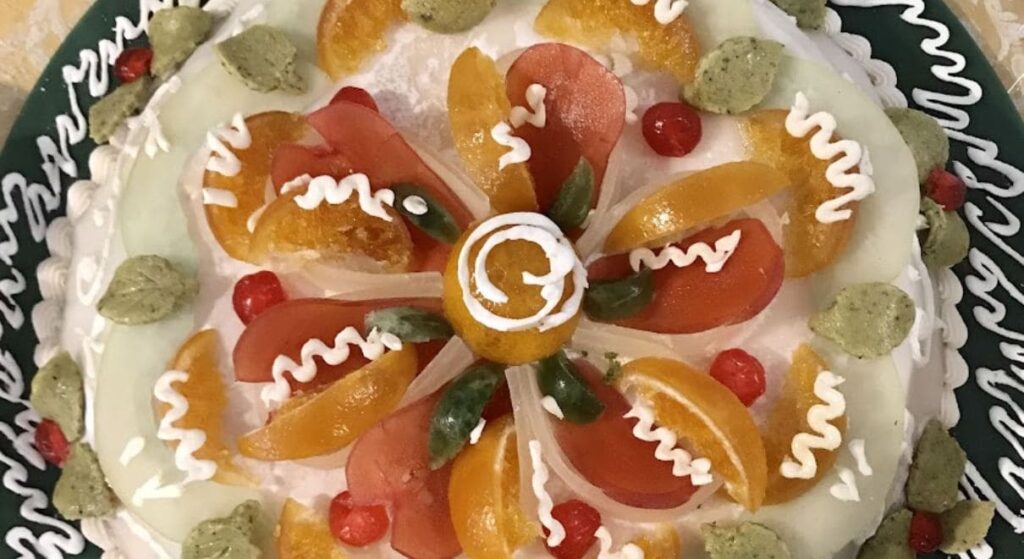
Palermo Cathedral (UNESCO Site)
Now, if it is boiling, you might continue your visit by car. Otherwise, you can easily continue walking to reach two imposing landmarks of Palermo.
First stop at the Palermo Cathedral, a masterpiece of architectural fusion and a must-see monument.
The Cathedral was constructed on the site of an earlier Byzantine Basilica. It underwent several renovations and expansions throughout the centuries, resulting in its unique and captivating appearance.
The main façade is flanked by two impressive towers and is characterized by a striking central portico, an addition from the 15th century, which gives way to the original Norman portal. The Cathedral’s southern side showcases a stunning blend of Gothic-Catalan-style arches and towers.
You can reach the rooftop on foot for a comprehensive view of the city, but ascending can be challenging and may not be suitable for all individuals.
The interior of the Cathedral is equally captivating. The ceilings are adorned with beautiful frescoes, and the floor showcases exquisite mosaic work.
In summer, the monumental areas of the church can be visited in the evening on specific dates, always with a separate admission fee. In these monumental areas, in the crypt, you can find the royal tombs of the House of Hohenstaufen, including Emperor Frederick II and his father, Henry VI.
What is special here: The Cathedral is home to several chapels, including the Royal Chapel and the Chapel of Saint Rosalia, the city’s patron saint. The latter houses a silver shrine containing the Saint’s relics, making it a site of significant religious importance, also in connection with the most deeply rooted traditions of the city.
In fact, every year in July, the city comes alive with the ‘Festino,’ a grand celebration of Saint Rosalia that dates back to the 17th century.
The festival commemorates the Saint who, according to legend, appeared in a vision to a hunter during a plague and saved the city.
Today, the highlight of this much-loved festival is the procession of a grand chariot carrying a statue of Santa Rosalia through the city streets. It’s a vibrant spectacle of faith and a day of festivity culminating in the fireworks at La Cava, the harbor area.
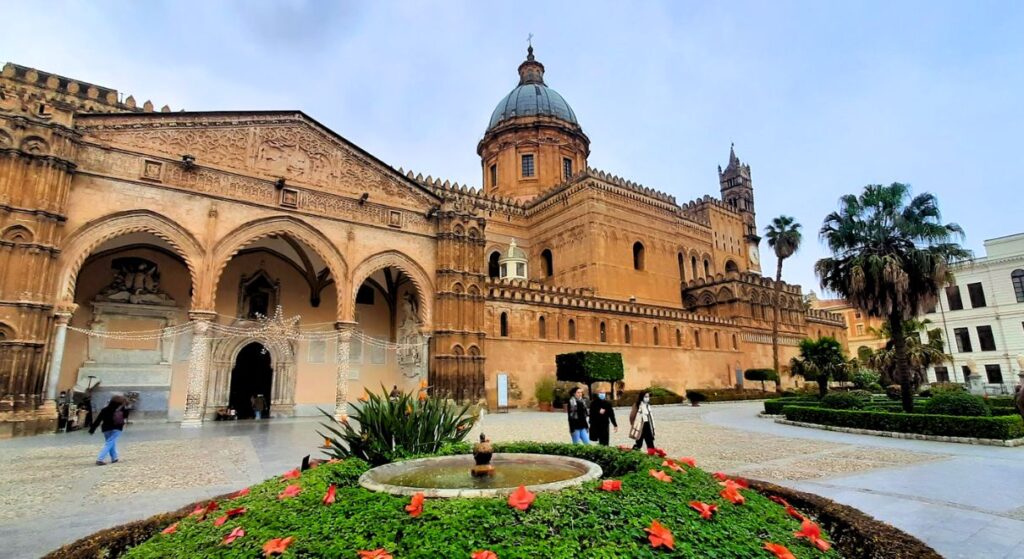
Food tasting break in Palermo
As your morning exploration of Palermo winds down, it’s time to indulge in a delightful Sicilian culinary interlude, as tasting some local food specialties is part of the cultural experience. Pause your sightseeing and immerse yourself in the vibrant local gastronomy scene.
While you might prefer to have your lunch in a traditional restaurant, consider starting your gastronomic adventure with a taste of the local street food and, above all, with the legendary Arancine and the popular Panelle.
To complete your tasting of local specialties, add something sweet. The renowned Cannoli and the Cassata Siciliana are at the forefront, and of course, the local gelato is served in round brioches. Read more in our article dedicated to the Sicilian food.
Palatine Chapel (UNESCO site)
Conclude your one-day Palermo tour witnessing the Royal Palace’s grandeur, known as Palazzo dei Normanni, and the mesmerizing beauty of its Cappella Palatina, the Palatine Chapel.
The Royal Palace, once a seat of kings, emirs, and viceroys, showcases the eclectic blend of styles we mentioned for other historical sites in town. What will undoubtedly impress you is the jewel in the crown of the Royal Palace: the Palatine Chapel.
What is special here: Built by the Norman King Roger II, this chapel is decorated from floor to ceiling with golden mosaics. Also gorgeous is the characteristic wooden muqarnas ceiling, typical of the Arab world, and the elegant marble incrustations.
Allow yourself time to admire all the details and enjoy its unique atmosphere before leaving Palermo for your next exploration.
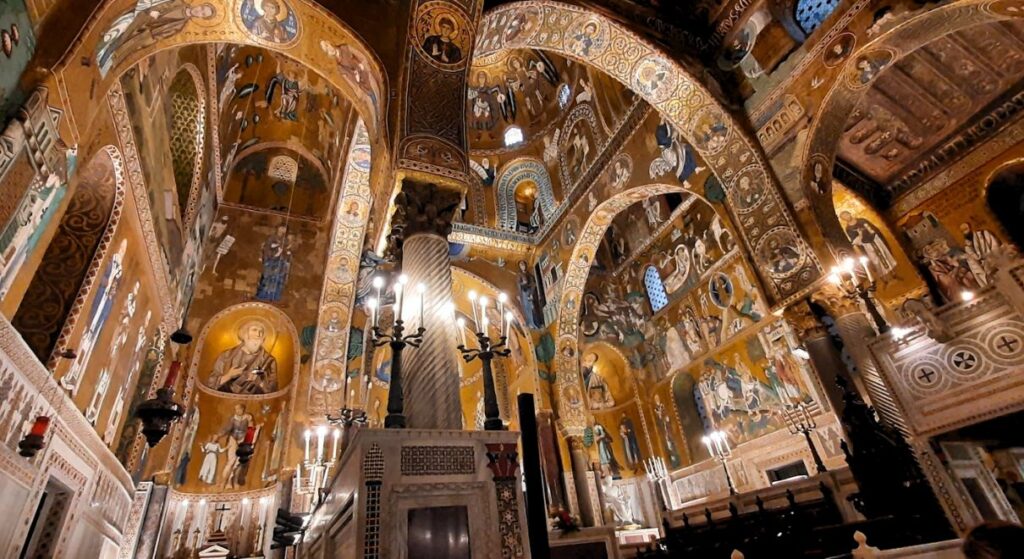
More places to visit in Palermo
There are many more things to see in Palermo. Should your visit to the city extend for more than one day, check out our guide for delving deeper into the splendors of Palermo and its environs.
If you only have a few extra hours to explore the city, you should consider visiting two worth-visiting artistic jewels: Teatro Massimo and Oratorio di Santa Cita.
Teatro Massimo Opera House
The largest opera house in Italy, Teatro Massimo, is one of the landmarks of Palermo. The building is neoclassical – eclectic, decorated with columns, frescoes, and golden accents.
This opera house has been a cultural epicenter for over a century and has hosted numerous world-class performances, including operas, ballets, and concerts by renowned artists.
What is special here: The acoustic is excellent. During the guided visit to the monument, you can test it directly in round shaped Pompeian Hall, a room decorated in red and gold originally accessible to men only, which boasts a peculiar acoustic: standing in the center of the room, your will experience your voice being greatly amplified, while from outside the room, because of the massive reverberation, it is impossible to discern what you say.
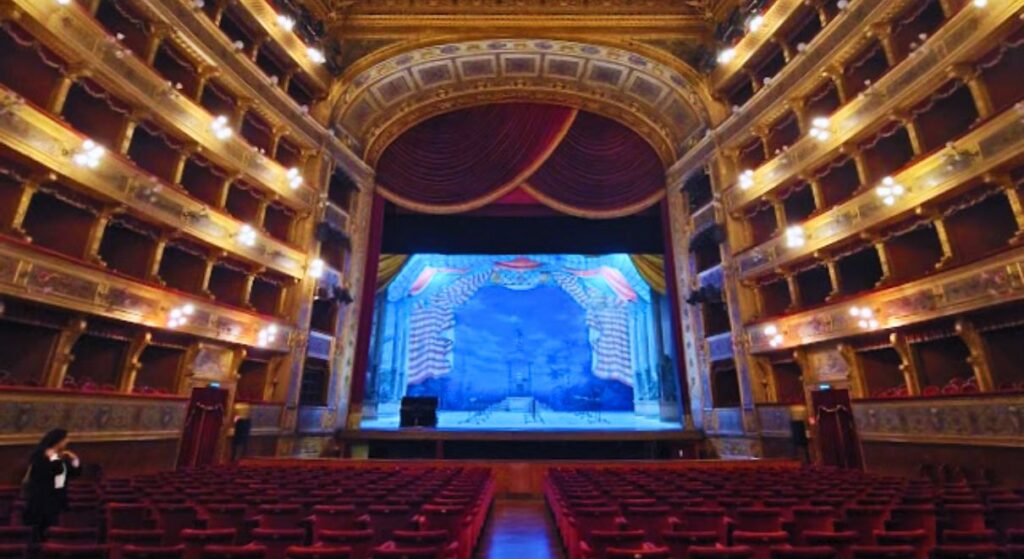
Oratorio del Rosario di Santa Cita
Complete your Palermo itinerary with a visit to the Oratorio del Rosario di Santa Cita, an example of Baroque grandeur. To the discerned traveler, this oratory offers a deeper engagement in the peculiar art and elegance of the Sicilian Baroque era.
What is special here: Within the oratory room, the walls come alive with incredibly intricate stucco reliefs by the artist Giacomo Serpotta. Delicate, white, high-relief stucco sculptures depict various religious and historical scenes.
One of the most famous scenes represents the naval battle of Lepanto, a pivotal victory for the Western forces over the expansion in the Mediterranean of the Turkish fleet, aided by the superior artillery and technology of the Holy League, which included Spain and the Republic of Venice.
Should you have time to prolong your stay in Palermo and indulge in a delightful evening meal within the city, an abundance of dining options awaits your pleasure, including two establishments honored with a prestigious Michelin star. Explore our article featuring a selection of the top culinary delights of Sicily.
